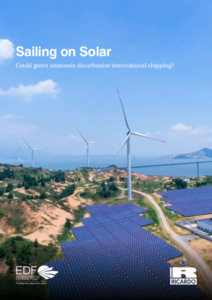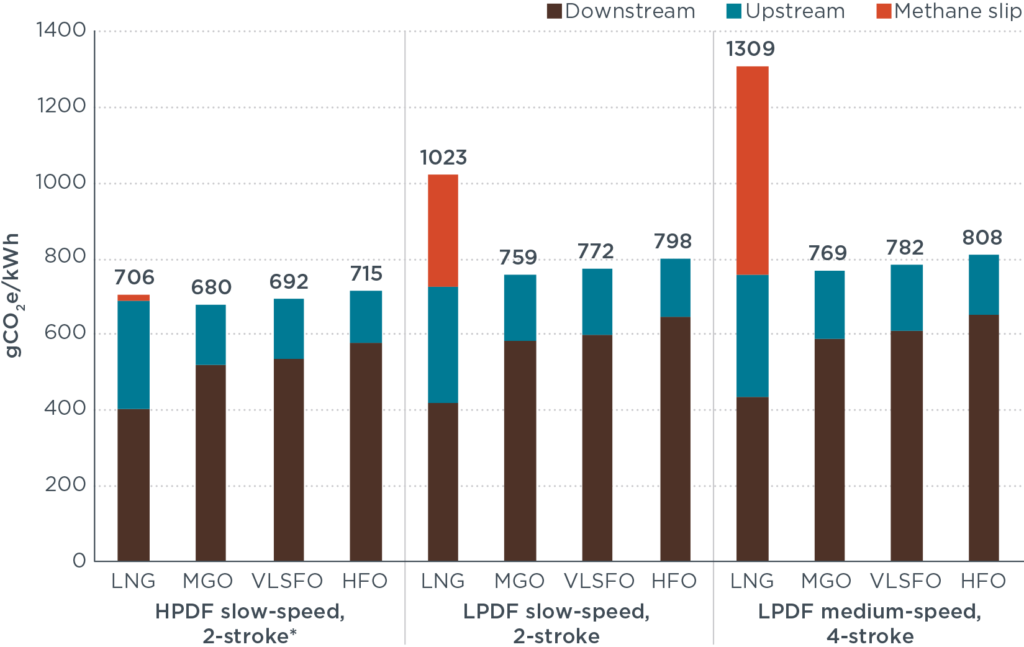The full picture: an assessment of shipping’s emissions must be based on full lifecycle accounting
By Marie Cabbia Hubatova on May 06, 2020
A guest article by Marie Cabbia Hubatova, Manager, International Climate, at Environmental Defense Fund Europe. This article was originally published at Bunkerspot, April/May 2020.
When you go to see a film in the cinema, the closing credits go on for another five minutes after the film is over. Although few moviegoers stay to read them, the lengthy credit rolls clearly show that a blockbuster is not just about actors we see on the screen but also about the hundreds of people behind the scenes. These people are as important as the main actors in the movie making process.
A similar situation occurs with a ship’s climate emissions: if we only account for what’s coming out of the stacks, we don’t understand the real climate impact of the fuel. The full life-cycle of emissions contributes to climate pollution, and we need to recognise their role in climate change. Overwhelming scientific evidence shows that full lifecycle accounting is essential to achieve decarbonisation. Shipping is an industry with long-term planning horizons and long-lived assets. It is crucial that policy makers in the International Maritime Organization (IMO) and the European Union (EU) provide clear guidance and a robust policy framework to account for the full climate impact of fuels.

Estimated emissions from international shipping account for about 2.6% of global greenhouse gas (GHG) emissions. If international shipping were a country, it would rank approximately as Germany (the 6th largest emitter in the world). In absolute terms, the shipping sector released 932 million tonnes CO2 in 2015. The COVID-19 outbreak will have a temporary dampening effect on emissions from shipping, and from all sectors, but we know from previous experience that this impact will be temporary and we cannot let it detract from the urgency of climate action.
Until recently, emissions estimates were made solely based on bunker sales. Since 2018, the EU’s Monitoring, Reporting and Verification (MRV) system has required ships over 5,000 gross tonnage calling at EU ports to submit reports on their fuel consumption, CO2 emissions, transport work and energy efficiency. One year later, the IMO Data Collection System (DCS) came into force, covering all ships over the same size threshold to report the distance travelled, fuel consumption and propulsion time.
Both of these systems need to incorporate appropriate lifecycle accounting and have near term opportunities to do so. Last year, delegates at the IMO touched on the topic of lifecycle accounting and will continue to discuss the topic once the IMO talks resume. In the EU, policy makers can incorporate appropriate accounting in the next two years as part of the legislative package coming on the back of the European Green Deal. Without these rules in place, there is a risk of the industry missing its decarbonisation target and worsening the global climate crisis.
The decarbonisation of shipping is one of the biggest challenges this industry has ever faced. To remain in line with the temperature objectives of the Paris Agreement, international shipping will have to do more and move faster than the goals set by the IMO in 2018 to reduce emissions by at least 50% by 2050, compared to 2008 levels.
It is imperative that the IMO adopts accounting and reporting tools to enable a clear and informative comparison of the climate impacts of fuels for shipping. A lot of work has been done by the International Civil Aviation Organization (ICAO) which can make the job of the IMO and the EU less challenging. The Environmental Defense Fund and University Maritime Advisory Services have looked at this question in the report Exploring the relevance of ICAO’s Sustainable Aviation Fuels framework for the IMO and found there are a number of things that would make the adoption of appropriate rules for shipping much faster, if adapted from ICAO. The framework for shipping will have to consider emissions that occur during the whole lifecycle of fuels – from the point of extraction or creation to combustion – to show the real climate impact.

For example, as shown in a recent study by the International Council on Clean Transportation (ICCT), liquefied natural gas (LNG) can be, on a lifecycle basis, worse for the climate than conventional fuel. Similarly, electrofuels, such as hydrogen or ammonia, could be made with fossil fuels and incentivising the use of such fuels can considerably deepen the climate crisis.
If, however, electrofuels are created using untapped renewable electricity and accounted using a full lifecycle approach, these can make a substantial contribution to shipping’s decarbonisation. Based on current scientific evidence, green ammonia and green hydrogen look like promising options. The low carbon transition of shipping is a huge economic opportunity, which can help transform many economies especially in developing countries, but the investment needed is not negligible. It is paramount that stakeholders and the shipping industry are fully informed about the real climate impacts of various fuels so that they focus on those that are truly sustainable.
It should also be noted that although a fuel accounting policy is crucial, it will have to be part of a wider decarbonisation package that motivates shipowners to move away from fossil fuels through putting a price on emissions. There is no time to waste, we need to achieve a smooth and prompt transformation of the shipping sector. If we put the right policy signals in place, we can do so while encouraging investment in truly green alternative fuels around the world.
A guest article by Marie Cabbia Hubatova, Manager, International Climate, at Environmental Defense Fund Europe. This article was originally published at Bunkerspot, April/May 2020.